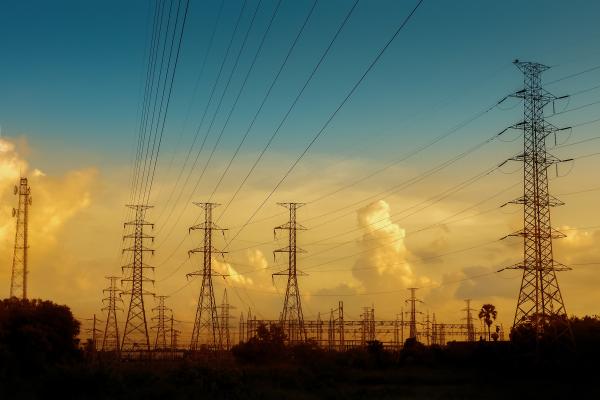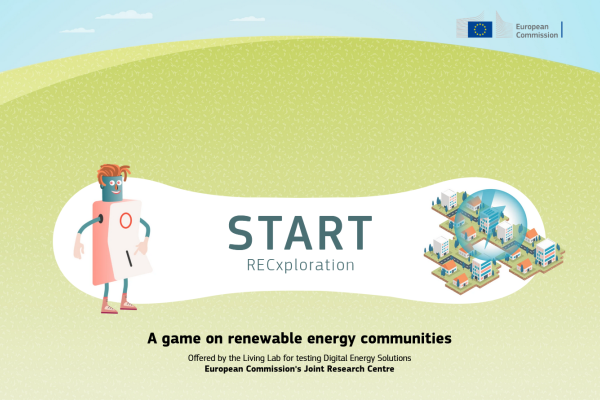
Large-scale deployment of innovative bifacial photovoltaic (PV) systems, oriented east and west instead of the conventional south-facing setup, could significantly help fix energy price swings, cut fossil fuel use, and strengthen Europe’s clean energy path, new research finds.
Traditional PV systems have been useful since their rise in the mid-2000s, but their rapid scale-up brought challenges too. Their south-facing orientation causes a midday power surge, leading to price swings that push down wholesale prices during peak production times.
Deploying different types of PV systems, like the vertical bifacial PV panels, can help reduce fluctuation in solar power production and value and stabilise the energy market.
Bifacial PV panels to maximise solar energy value and production
Addressing this issue of fluctuating solar power value with traditional PV panels, the study – led by the Commission’s Joint Research Centre (JRC) – uses data on bifacial PV production in an hourly dispatch model that analyses energy systems in EU Member States and Balkan countries. These data are generated by the JRC’s Photovoltaic Geographical Information System (PVGIS) and the European Solar Test Installation (ESTI) laboratory.
The model shows big differences in the current energy system performance (in terms of costs, price, and curtailments or reductions of energy output), resource and technology use, and CO2 emissions. When innovative bifacial PV are incorporated in large scale to the solar setup, four main patterns emerge:
- Higher solar power value: by producing energy during peak demand times, bifacial panels can get higher prices for their output.
- Lower base power prices: more steady energy production throughout the day can help lower overall electricity costs.
- More production in sunny regions: countries blessed with abundant sunshine can maximise their solar potential.
- Improved energy sharing: well-connected countries can import more power from their neighbours, fostering a more integrated and resilient European energy grid.
Innovative PV setups for a more stable power system
As bifacial PV panels capture sunlight from both sides, they are suited to be positioned vertically facing east and west. This seemingly simple change in orientation allows to shift peak solar production to morning and evening hours, helping smooth out the price swings.
Deploying vertical bifacial PV panels extends the production time of PV electricity to periods where it is more valuable to the consumers and easier to be dispatched.
Bifacial module requires negligible added cost compared to usual PV modules (the back cover has to be replaced with a transparent one) and extends the range of PV applications to options that minimise land use changes and can produce electricity in a strikingly different pattern.
European policy makers and national governments need reliable scientific evidence to help inform their decisions. The study shows that with higher PV penetration, aligning more closely with key EU policy initiatives (EU Solar Energy Strategy, Green Deal, REPowerEU Plan), east-west faced vertical PV panels can play a favourable role to achieve a more balanced and more integrated power system in the EU by 2040.
Updated online tool to check solar electricity production in your home
The JRC manages PVGIS, a user-friendly tool that allows citizens to find out how much electricity PV panels would generate where they live.
The new 5.3 version, which will be released this week during the European Photovoltaic Solar Energy Conference and Exhibition (PVSEC), features:
- Updated temporal coverage of current PVGIS solar radiation and meteorological datasets, up to the year 2023.
- Extended area for which the dataset is available:
- Data now extend up to 25 km offshore, encompassing coastal waters[1];
- This extension ensures full coverage around the coastline areas on land;
- Smaller geographical areas worldwide are now comprehensively covered, boosting PVGIS capabilities to produce world maps.
- The solar radiation dataset that constitutes the backbone of PVGIS has been updated to improve accuracy of snow-covered surfaces.
Available in five different languages (English, Italian, French, German and Spanish).
[1] The results for floating PVs now provide energy production as if they were installed on land. Further research to keep into consideration specific offshore characteristics (temperature, irradiance, etc.) should be developed.
Related links:
How research on solar power contributes to energy security
Details
- Publication date
- 23 September 2024
- Author
- Joint Research Centre
- JRC portfolios




